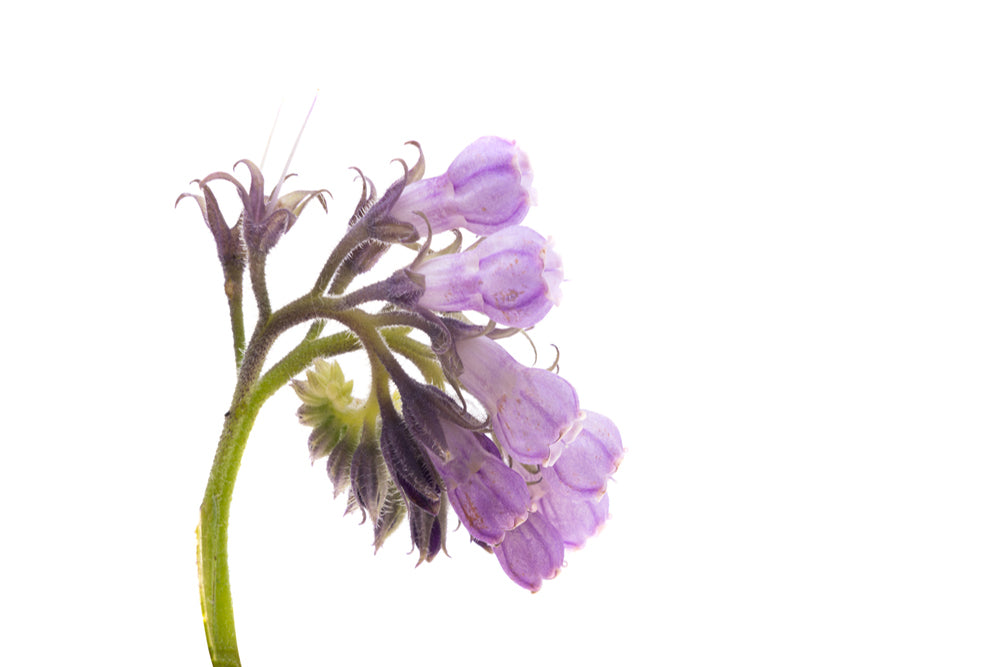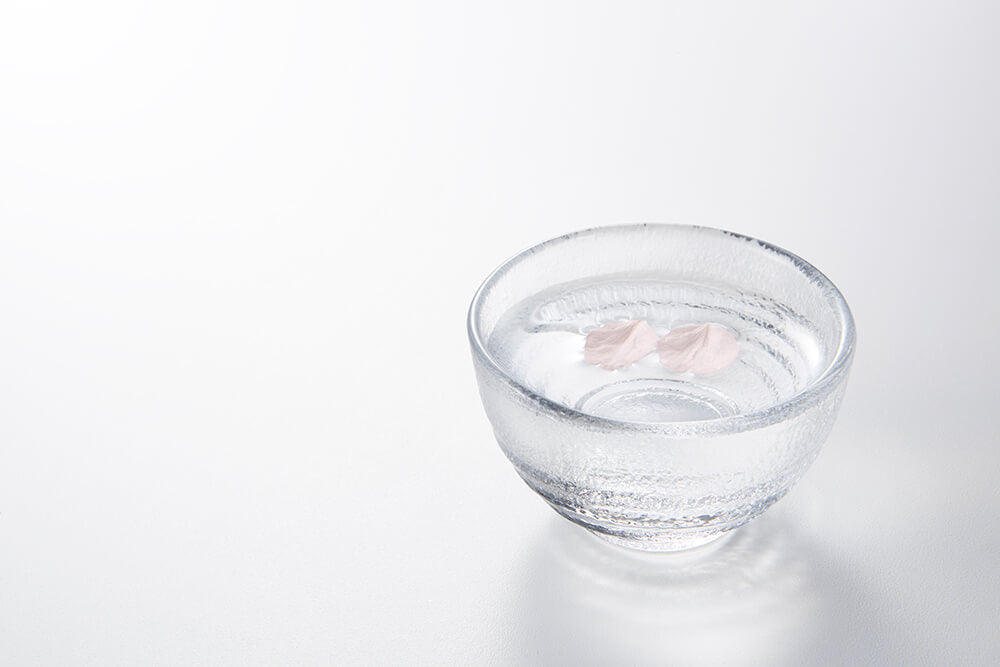
ingredient focus: allantoin

the bottom line
Allantoin is a multi-functional natural ingredient which has been used for cosmetic purposes for over 70 years. Also known as aluminum dihydroxy allantoinate, it is an extract from the comfrey plant, which is native to Asia and Europe. Allantoin is notable for its keratolytic, moisturizing, and soothing properties, and is a key ingredient in many natural skincare products. Keep reading to learn more about this underrated beauty.
first layer: the history
Allantoin is present in a number of organisms, including bacteria, plants, and animals. Both endogenous to the human body and consumed in our diets, it’s found in wheat germ, soybean, and especially the leaves and roots of the comfrey plant. Allantoin was first isolated in 1800 by the Italian physician Michele Franceso Buniva and the French chemist Louis Nicolas Vauquelin, who named it after allantois, an amniote embryonic excretory organ. Allantoin was subsequently isolated from uric acid by the German chemists Friedrich Wohler and Justus Liebig in 1837.
As a result of the high cost of extraction of allantoin from plants, it is now generally manufactured in the laboratory via chemical synthesis. Allantoin is readily synthesized by the alkaline oxidation of uric acid to create a nature-identical and chemically equivalent product. Allantoin has become an important ingredient in both cosmetic and pharmaceutical preparations.
second layer: the science
While allantoin has been cited in the literature for its effects, the exact mechanism of action is unclear. Because comfrey leaves have been used for centuries for wound healing, allantoin is thought to have significant healing and soothing properties. It is noted to be a mild keratolytic* agent which assists in desquamation* of the stratum corneum* of the epidermis. By stimulating proliferation of the epidermis, allantoin promotes regeneration of damaged skin.
Allantoin is able to increase moisture within the extracellular matrix*, which improves moisturization of the skin. It is anecdotally noted to be soothing with anti-irritant properties.
third layer: skincare
Allantoin has been widely used in cosmetic preparations for both the skin and hair for decades. Some of the most notable benefits are as follows:
keratolytic: as noted above, allantoin is a keratolytic, which means that it can exfoliate dead skin cells by helping to shed the outermost layer of cells from the stratum corneum of the epidermis. By exfoliating these cells, allantoin helps to improve skin texture. The keratolytic effect is also helpful in haircare, where allantoin fights dandruff by breaking down large particles of dead skin cells
moisturization: by limiting transepidermal water loss (TEWL), allantoin helps to maintain hydration of the skin.
soothing and anti-irritation: allantoin is noted to soothe irritated skin and has been used to treat skin irritation and rashes. As such, it is a valuable ingredient in the care of sensitive skin, and can be found in hand, foot, and aftershave preparations.
regeneration: allantoin has been shown in animal models to assist in wound healing by stimulation of fibroblasts and synthesis of the extracellular matrix.
The Food and Drug Administration (FDA) in the United States has classified allantoin as an over-the-counter drug when skin protectant claims are made.
fourth layer: how we do it
We’ve added a lovely bit of allantoin to our sake & sandalwood lotion for anokha man. This gentle lotion for sebum-rich, testosterone-charged skin that layers sake filtrate, rice bran, allantoin, sandalwood, and bergamot to deeply nourish and visibly refresh skin.
It's a stiff drink to combat skin dryness.
All this and more at www.anokhaskincare.com .
xx
anokha
references:
- Janes D, Kocevar Glavac N. “Allantoin”, in Modern Cosmetics. 2018. Velenje, Slovenia: Sirimo dobro besedo, d.o.o.
- https://formulabotanica.com
- https://www.byrdie.com
- https://en.wikipedia.org/wiki/Allantoin
- Araujo LU, Grabe-Guimaraes A, Furtado Mosqueira VC, Carneiro CM, Silva-Barcellos, NM. Profile of wound healing process induced by allantoin. Acta Cir Bras 2010; 25(5). https://doi.org/10.1590/S0102-86502010000500014
- Becker LC, Bergfeld WF, Belsito DV, et al. Final report of the safety assessment of allantoin and its related complexes. Int J Toxicol 2010; 29 (suppl 2): 84S-97S.
definitions:
desquamation: shedding of the outer layer of the skin. this is a normal process in healthy skin, although some skin diseases will manifest with increased or decreased desquamation.
extracellular matrix: a three-dimensional network of macromolecules and minerals outside of the cells, including collagen, enzymes, proteins, and hydroxyapatite. the ECM provides structural and biochemical support to surrounding cells.
keratolytic: keratolytics are compounds that break down the outer layers of the skin. they include salicylic acid, urea, and alpha-hydroxy acids (glycolic and lactic acids).
stratum corneum: the outermost layer of the epidermis and marks the final stage of keratinocyte maturation and development.
faq's:
what is allantoin?
allantoin is a multi-functional natural ingredient which has been used for cosmetic purposes for over 70 years.
is allantoin safe for sensitive skin?
allantoin is very soothing for irritated skin. it is an excellent ingredient for sensitive skin.
can allantoin be used on acne-prone skin?
allantoin helps to remove dead cells from the surface of the skin and can help to exfoliate acne-prone skin.
can allantoin be used on dry skin?
allantoin helps to reduce transepidermal water loss, and therefore is an ideal ingredient for dry skin.
what is allantoin used for?
allantoin is used in cosmetic and pharmaceutical preparations to assist in exfoliation, hydration, soothing, and regeneration of the skin.
what is allantoin derived from?
although allantoin can be derived from the comfrey plant, it is now most often synthesized chemically in the laboratory. synthesized allantoin is considered to be nature-identical to allantoin derived from plants.



Laisser un commentaire
Ce site est protégé par hCaptcha, et la Politique de confidentialité et les Conditions de service de hCaptcha s’appliquent.